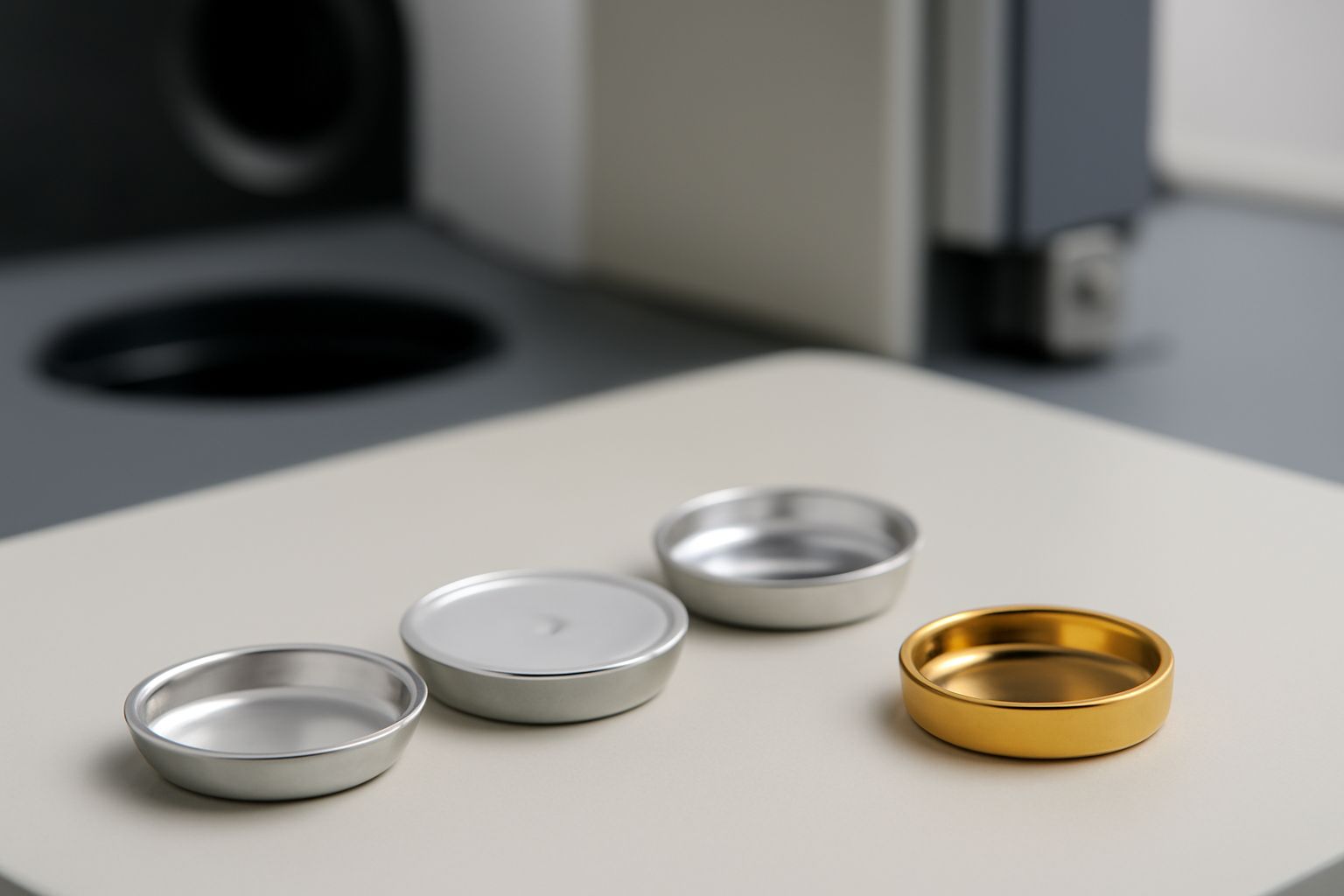Your cart is empty.
shop now
Your cart is empty.
shop now
Many laboratories struggle with polymer test inconsistencies. This often traces back to poorly chosen sample pans and lids instead of the instrument itself.
DSC consumables, such as sample pans and lids, are key parts in polymer analysis. Their type and quality ensure the sample remains stable, heat transfers correctly, and measurements are accurate.

I have found that no matter how advanced a Differential Scanning Calorimeter is, results will suffer if the right consumables are not used. This can affect research and even product development. Next, let’s break down how each item matters in the process.
Uncertainty in test results is often due to simple items like pans and lids. Choosing the right consumable sets the stage for stable results and less troubleshooting.
The common DSC consumables in polymer testing are aluminum pans, hermetically sealed pans, gold or platinum pans for high temperature, various lids, and O-rings.
| Consumable | Description | Main Application |
|---|---|---|
| Aluminum Pans | Single-use, good for most polymers, affordable | Standard DSC tests, glass transition, melting |
| Hermetic Pans | Sealed lids, prevent loss of volatile samples | Moisture or low-mass sample analysis |
| Gold/Platinum Pans | High stability, chemically inert, reusable | High temperature and reactive polymer measurements |
| O-Rings | Helps make tight seal between pan and lid | Measurements where sample loss could skew results |
| Pierced/Standard Lids | Allows gas exchange or sealing, flexible | Control vapor or prevent sample loss |
Each consumable is chosen based on the sample’s physical and chemical features, affecting setup speed and measurement quality. For further details on crucibles and accessories, I recommend referencing instrument handbooks or supplier datasheets for your application.
Errors in results sometimes come from something as simple as the pan type or lid seal. Best practice is to match the consumable to both analysis type and polymer property.
The right DSC consumable ensures even heat flow, no sample escape, and stable baseline. This all improves the quality and repeatability of polymer DSC results.
| Consumable | Accuracy Impact | Example Issue |
|---|---|---|
| Aluminum Pans | Fast heat transfer, may react with some samples | Baseline noise if contaminated |
| Hermetic Pans | Seals sample, keeps volatiles, minimizes mass loss | Pressure buildup if sample expands |
| Platinum Pans | Handles very high temperatures, best for aggressive chemicals | Higher cost, rare in routine QC |
| O-Rings & Seals | Prevent leaks and atmospheric effects | Incorrect fit causes sample evaporation |
| Pierced Lids | Vents gases, avoids pressure spikes | Open lid leads to dry-out or contamination |
According to peer-reviewed research, even a minor mismatch between consumable type and sample behavior can cause false peaks or missing transitions. For important projects, I always double-check for correct pan and lid pairing to prevent these errors.
I have seen specialty polymers act up simply because they did not have the right pan or seal. Trial and error wastes time and good samples.
Some polymers need special DSC consumables due to unique chemical makeup, risk of degradation, or testing temperature. Reactive, high-moisture, and high-temperature polymers each need dedicated solutions.
| Polymer Type | Need | Recommended Consumable |
|---|---|---|
| Reactive Polymers | Can react with aluminum or oxidize | Inert platinum or gold pans |
| Volatile/Low Mass Polymers | Risk of evaporation, weight loss | Hermetic sealed pans and tight O-rings |
| High-Temperature Polymers | Stable up to 1000°C or more | Platinum or ceramic pans |
| Standard Plastics | Melting point and glass transition under 300°C | Standard aluminum pans |
| Moisture-Sensitive Polymers | Absorb water easily | Hermetic pans, sometimes with desiccant lid |
Many suppliers, including brand comparison charts, offer lists to help match polymer class to the best consumable. Find a cross-reference guide like the ones from instrument companies to minimize risk early.
Choosing DSC consumables can seem simple, but I have seen costly test errors from basic mistakes. Preparation pays off every time.
Selecting the right DSC consumable means matching polymer type, test goal, and lab conditions to the available pan, lid, or accessory options.
| Selection Factor | Consideration | What to Use |
|---|---|---|
| Polymer Chemistry | Reacts with metal? Contains volatiles? | Inert or sealed pans (see calorimetry basics) |
| Test Temperature | Will the test go over 600°C? | Platinum or ceramic consumables |
| Analysis Target | Moisture, melting, crystallization? | Hermetic pans for moisture, standard for others |
| Instrument Brand | Instrument model and pan compatibility | Brand-specific or compatible SKUs |
| Budget and Usage Rate | Routine runs or specialty research? | Aluminum (routine), platinum (research) |
By following a checklist, even new lab techs avoid most errors. I keep printable reference tables taped near our machines. For online selecting, use distributor comparison pages or customized consumable service platforms for fast consultation.
With the right DSC consumables, polymer testing is stable, repeatable, and ready for confident decisions in every laboratory.
Contact Technical Support